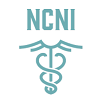Treatment for Torticollis in LA
Torticollis, also referred to as Loxia and wryneck, covers a wide category of neck disorders that exhibit extension, twisting, or flexion of the neck muscles beyond their usual capacity. This causes the head to tilt to one side and usually stems from a head injury or negative reactions to medication.
Patients affected by torticollis may find it painful or uncomfortable to place their head in an upright position or to turn it towards the unaffected side. According to Encyclopedia.com, torticollis affects around 83,000 people in the U.S.
Although doctors are unable to pinpoint the exact reason behind the condition, several instances contribute to its development. Common ones include inflammation of the neck or head, injury to the spine or neck, infections in other parts of the body like the jaw, scalp, or teeth, or abscesses in the upper airway.
Symptoms of torticollis vary from one patient to another and common ones include tense, painful neck muscles, headaches, back pains, jerky muscle spasms, neck cramps, and difficulty in turning the head. For infants, symptoms of torticollis are limited movement in the neck and head, a small lump in the neck, musculoskeletal problems, and tilting of the head.
Infants, newborns, and children develop wryneck due to congenital muscular torticollis which means that they were born with the condition. Congenital muscular torticollis occurs in children due to several reasons including trauma during birth, inheriting diseases that act as underlying reasons for the problem, and flat head syndrome.
Minor instances of torticollis can disappear after a couple of days of rest. Symptoms can be eased by using ice or heat packs, stretching exercises, reducing stress, and getting plenty of sleep.
Dr.Farzin Pedouim is a board certified neurologist based in Huntington Beach and Los Angeles. He uses a combination of treatments including physical therapy, medications, Botox injections, surgery, ultrasound therapy, and cervical collar to help patients overcome the symptoms.
